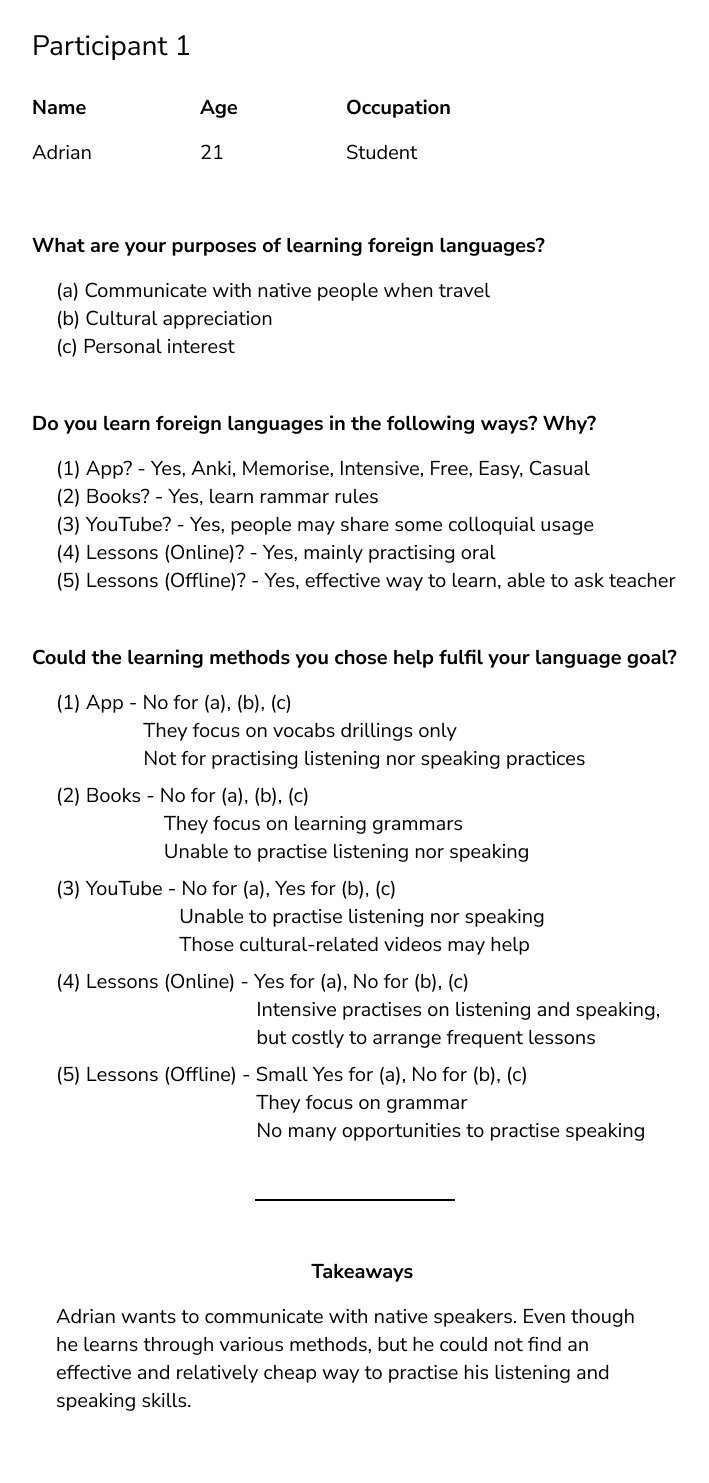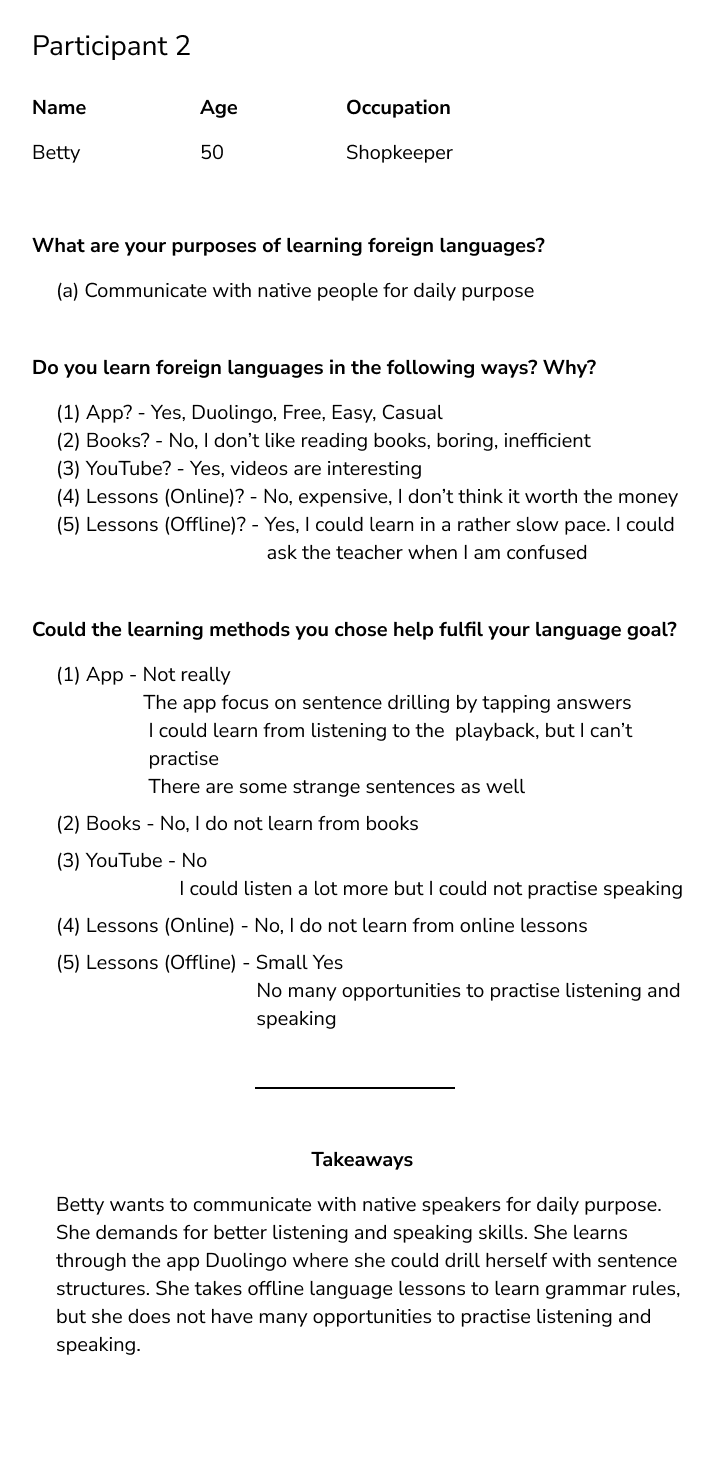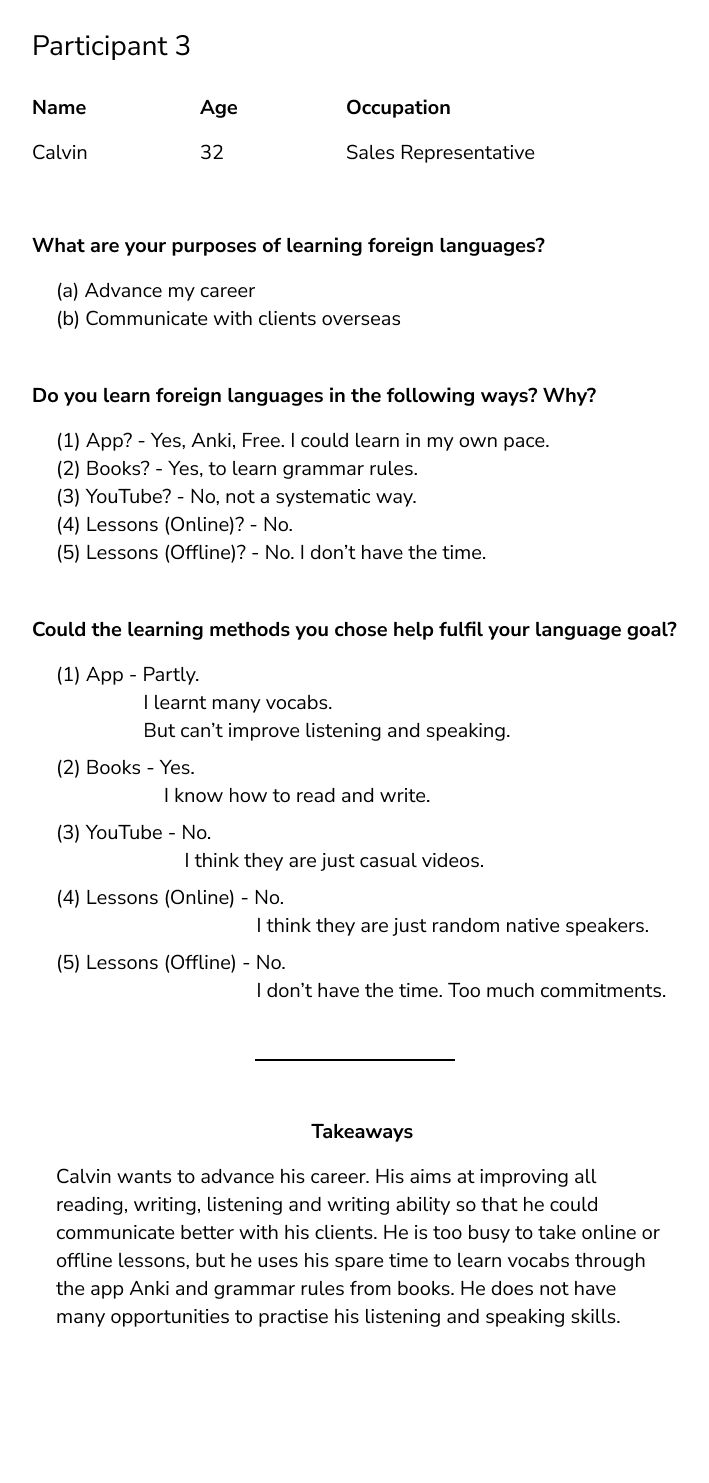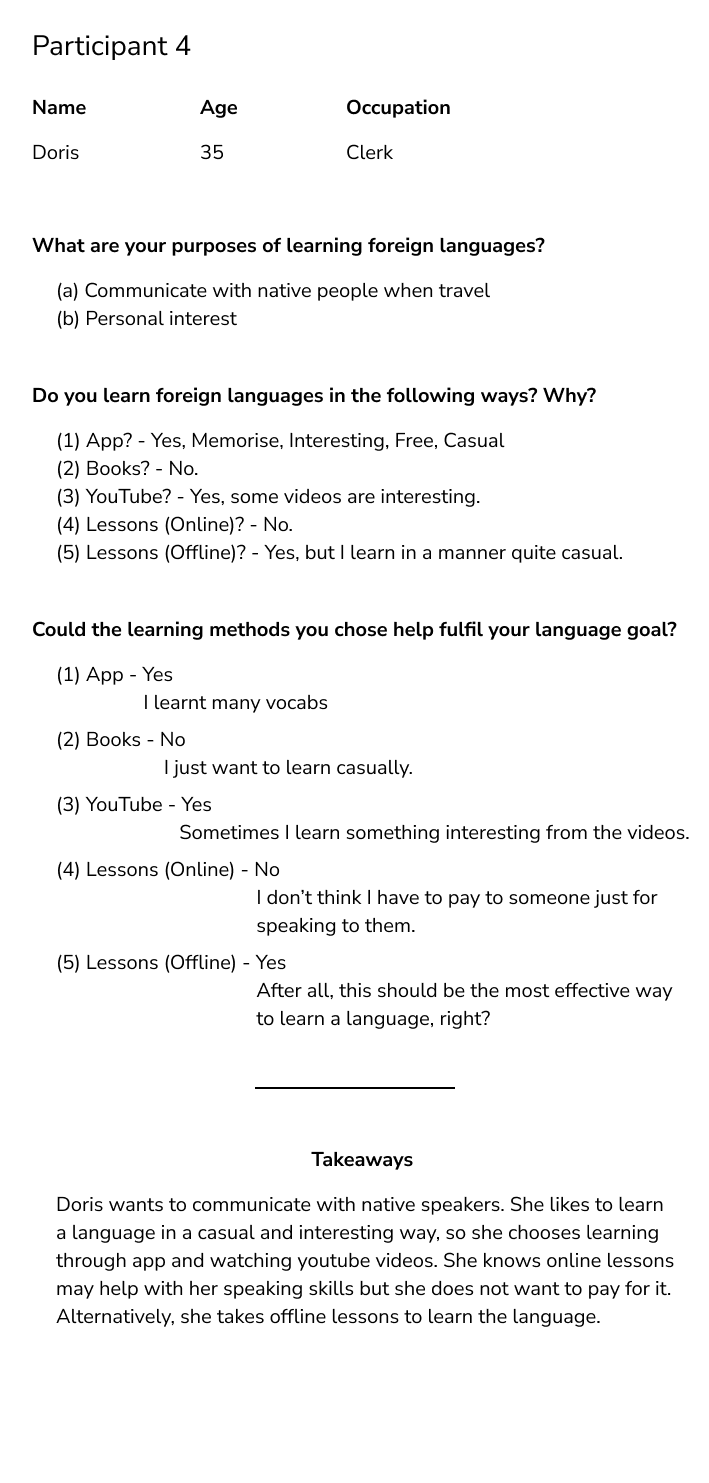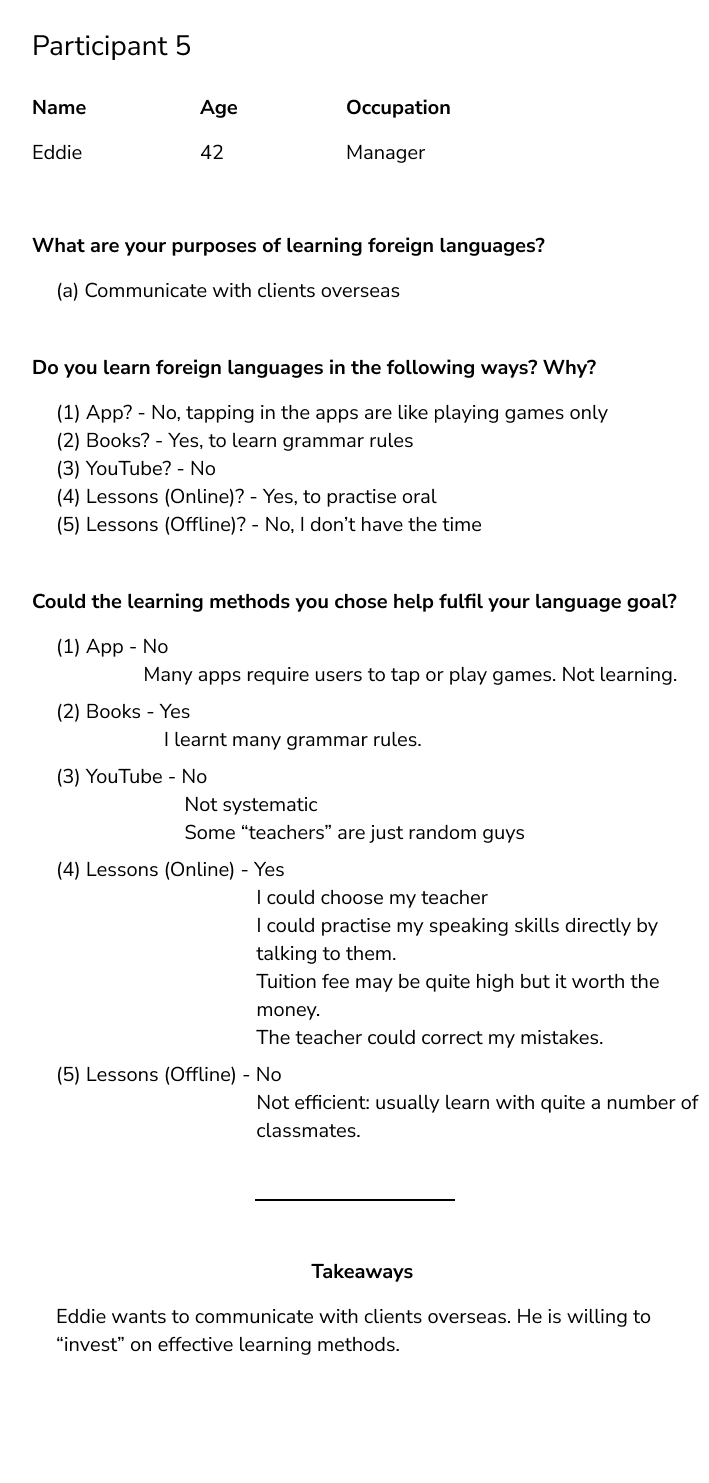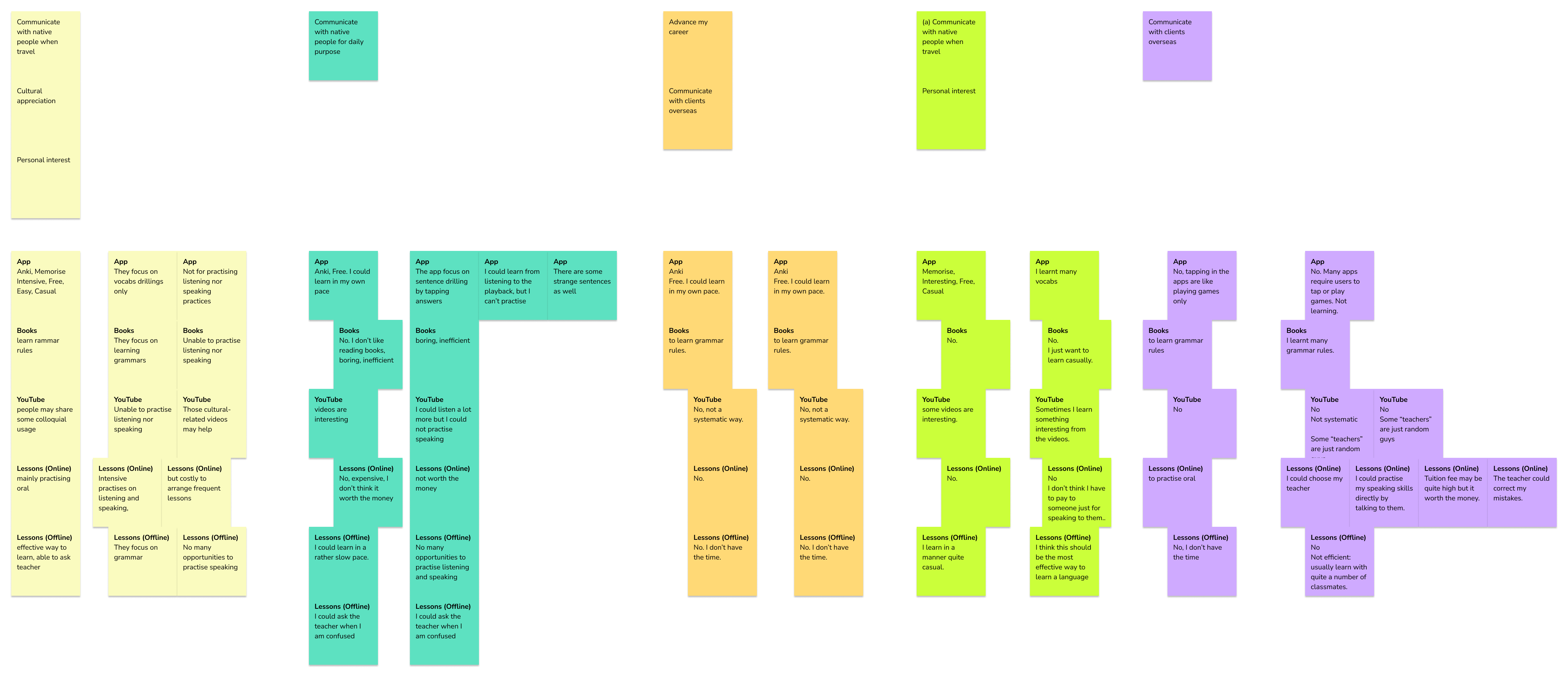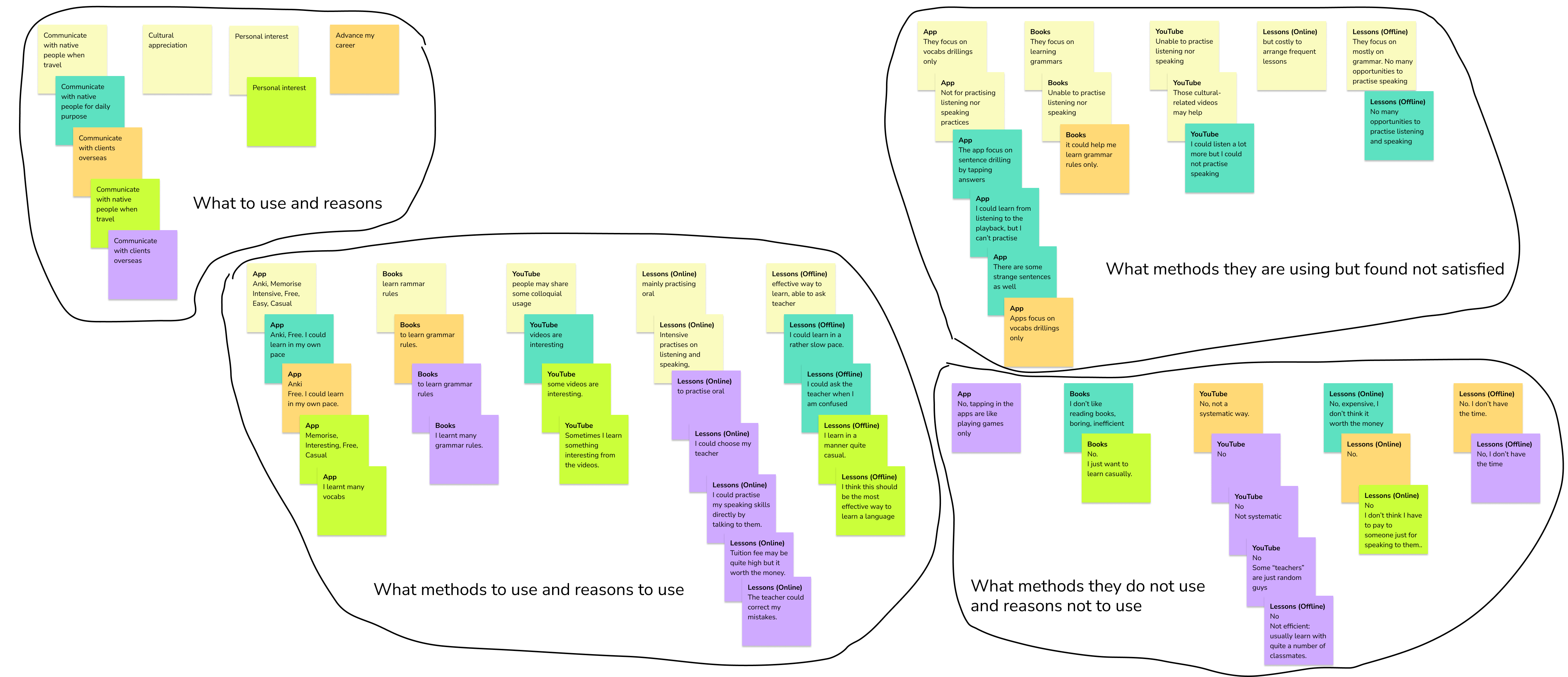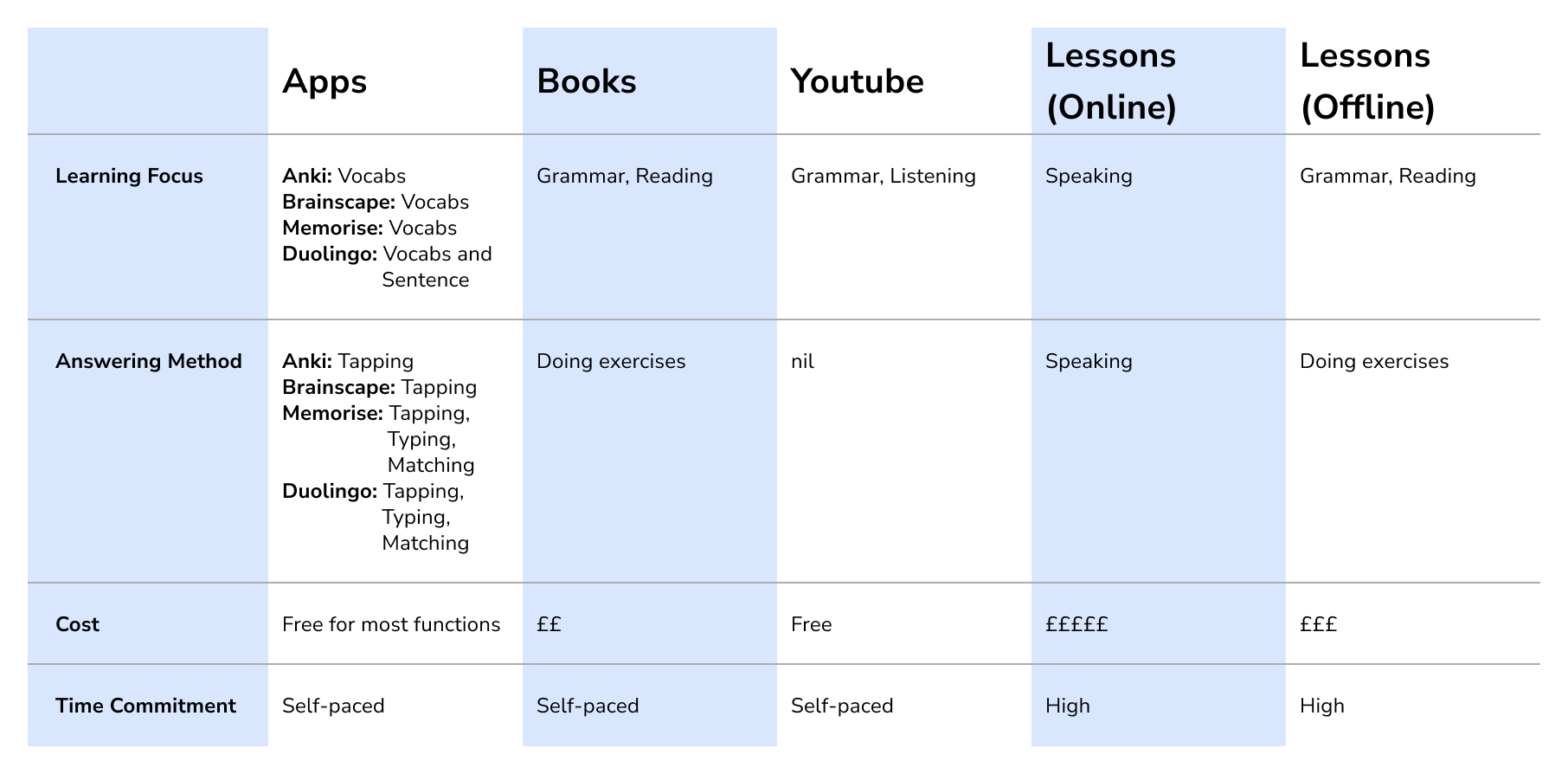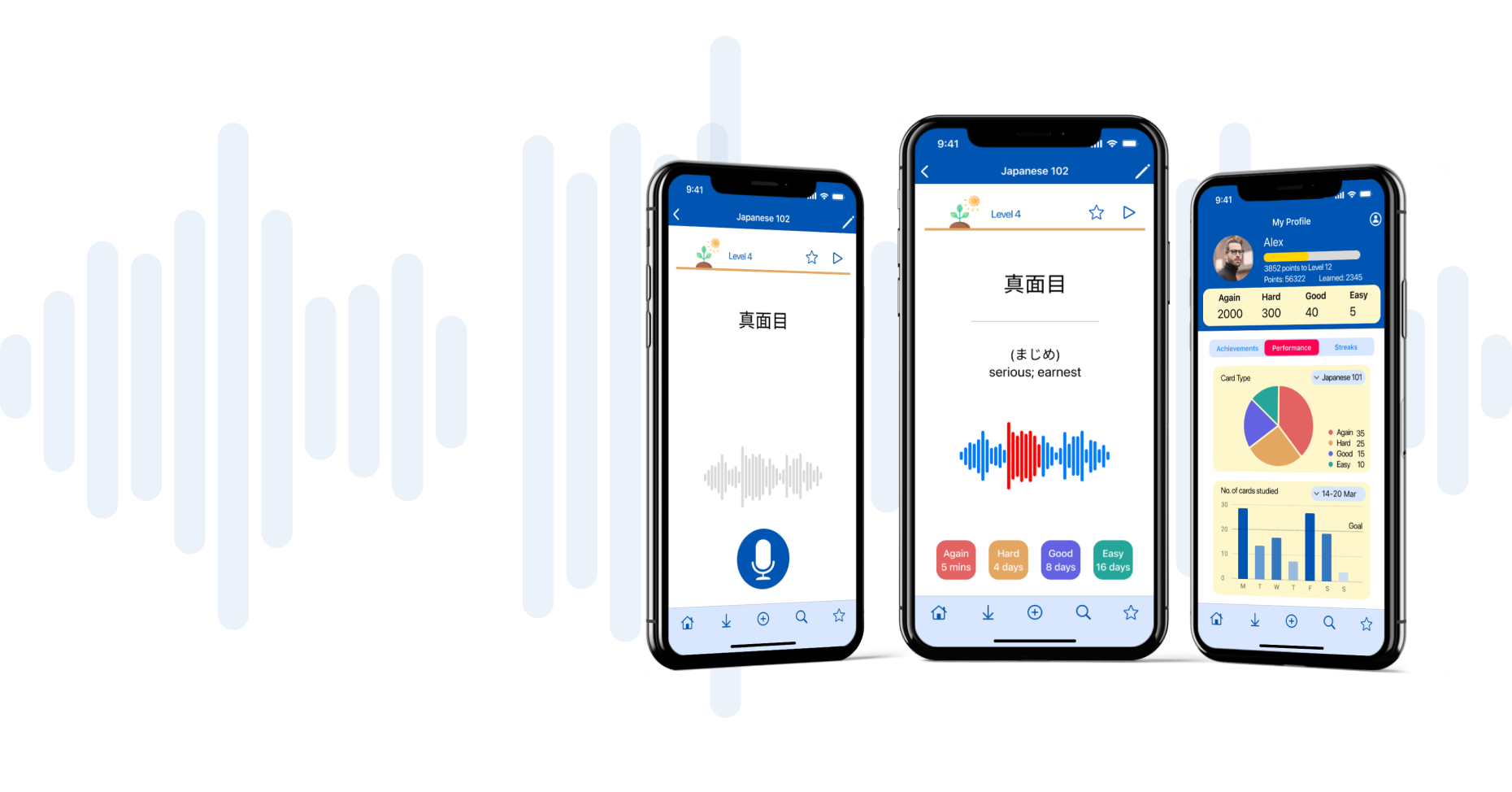
MEMORAL
A Native iOS & Android App
powered by sound AI for language learning
CONTEXT
My initial thought was that after learning Japanese for years through lessons, books, and apps, there were not many resources available for practising speaking on my own. While one could practise speaking with native speakers through online platforms, it was not a long-term, self-help solution for practise. That’s when the idea of designing “an app that listens to and corrects the users” came to my mind. After conducting several user interviews and tests, a user-justified language app, memoral, was designed.
MY ROLE
In this project, my responsibilities included user interviewing, analysing data, creating designs from scratch, and developing low-to-high-fidelity prototypes using clickable wireframes with pixel-perfect accuracy.
Tools used: Bandicam, Zoom, MS Word, Figma
Duration: Jul 2022 – Aug 2022 (2 months)
Role: User Research, Competitor Analysis, Wireframes, Prototypes
USER INTERVIEWS
I have interviewed 5 people to discover their purposes and methods of language learning, as well as the frustrations they are facing.
The summaries, in the format of affinity map, are as follows:
Their primary goal of learning foreign languages, in my interpretation, is:
“to communicate with native speakers”
regardless of whether it is with native people during travel or daily activities or with their clients.
Most apps solely focus on vocabulary building, involving typing out spellings or selecting correct answers from various choices. Yet, they do not provide opportunities to practice using those vocabularies in contextual situations.
When learning through books or offline lessons, grammar study is involved. But neither method necessarily requires language output.
The only method that could help them achieve their goal of effective communication with native speakers is taking online lessons. By its nature, enrolling in online lessons involve a lot of speaking practise to native speakers, often in an 1-to-1 environment. But the drawbacks are costly and a high time commitment.
This makes me think of designing an app that allow users to talk to so that my users could achieve their primary goal with the following traits:
This makes me think of designing an app. So users could achieve their primary goal with the following traits:
- low cost or free-of-charge
- low time commitment
- speaking-oriented practise
COMPETITIVE ANALYSIS
Among all flashcard app on the market, Anki, Brainscape, Memorise and Duolingo offer the closest services to the primary goal. So I focus on these apps the most when planning my language app: memoral.
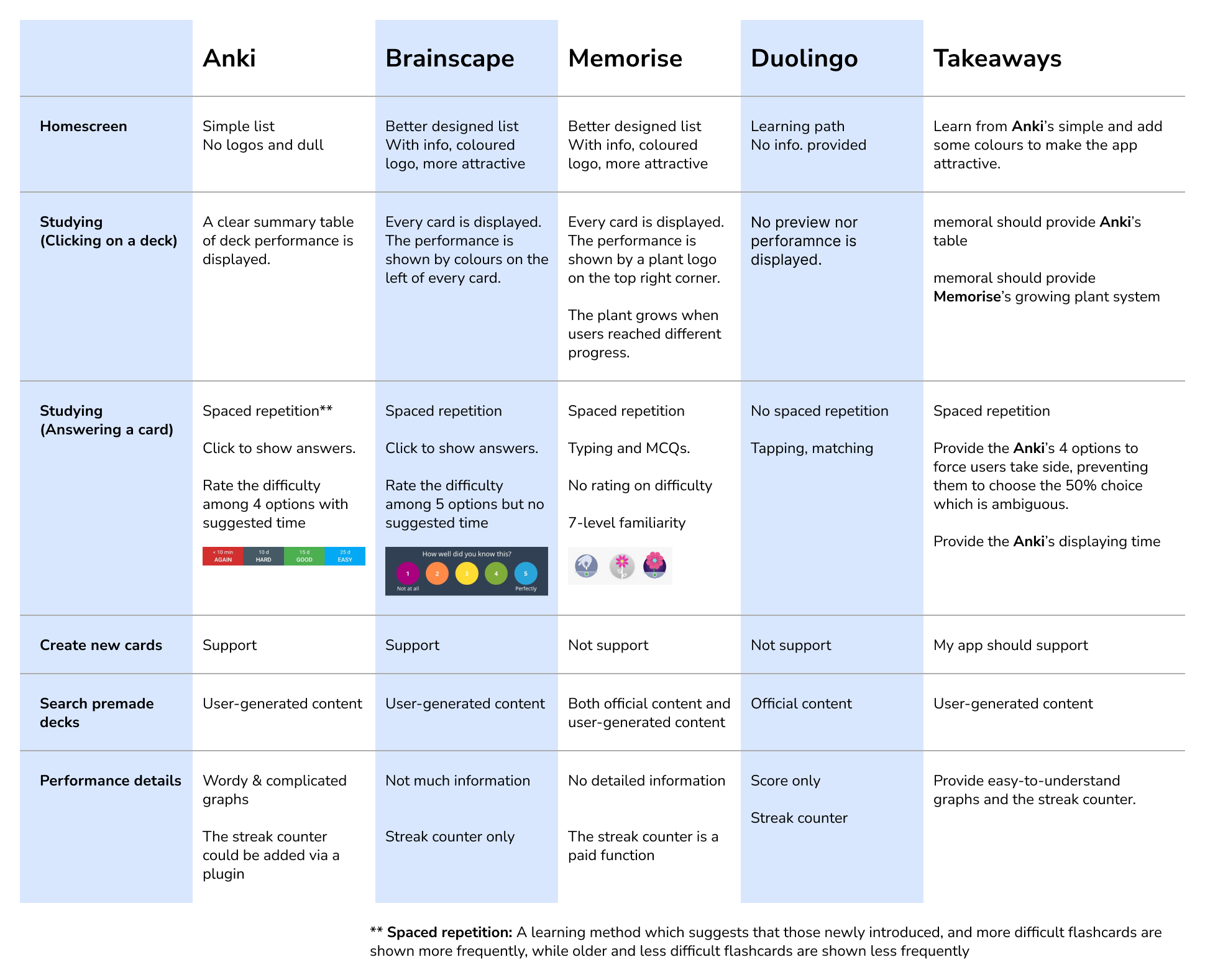
IDEATE
DEFINING USER GOALS
With the five users in mind, I began defining their user stories to guide the development of my language app: memoral.
As a language learner…
- I want a platform that allows me to talk to, in sentence form, so I could practise my speaking skills.
- I want a platform that able to correct my pronunciation, so I could know what I should improve.
- I want to learn at my own pace because sometimes I could learn more but sometimes not.
- I want a platform that allow me to use offline, because I may not always connect to the internet.
- I want a platform that is simple, intuitive and familiar to me. I don’t want to spend time on learning a brand new app.
A NATIVE iOS APP / ANDROID APP
With the user goals that shaped the core values of my app:
- speaking-oriented practise
- low time commitment
- able to use offline
I intended to design a native iOS / Android app, which allows users to use whenever they have time, even with no internet connections.
USER FLOW
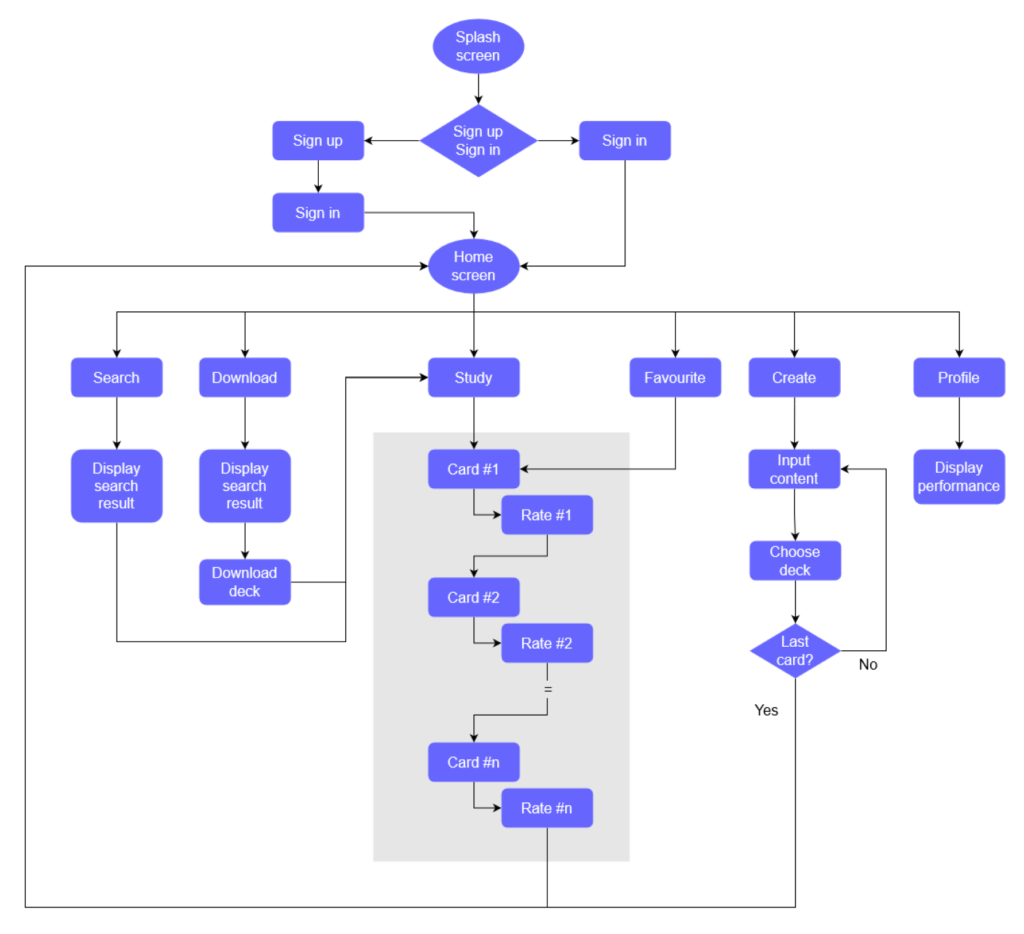
WIREFRAMES & UI
Low-fidelity Wireframes
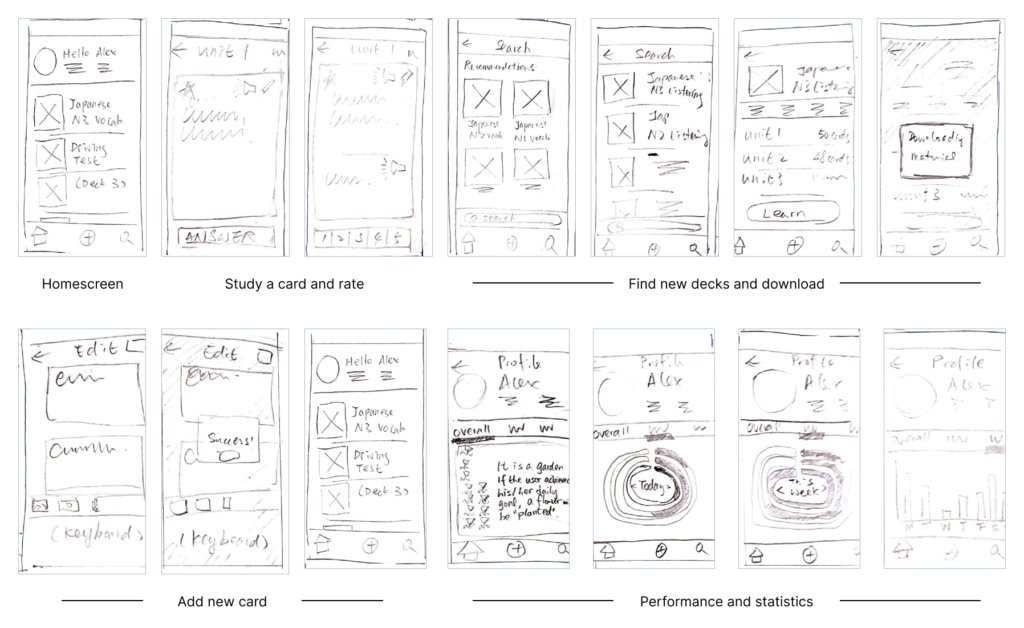
Mid-fidelity Wireframes
iOS
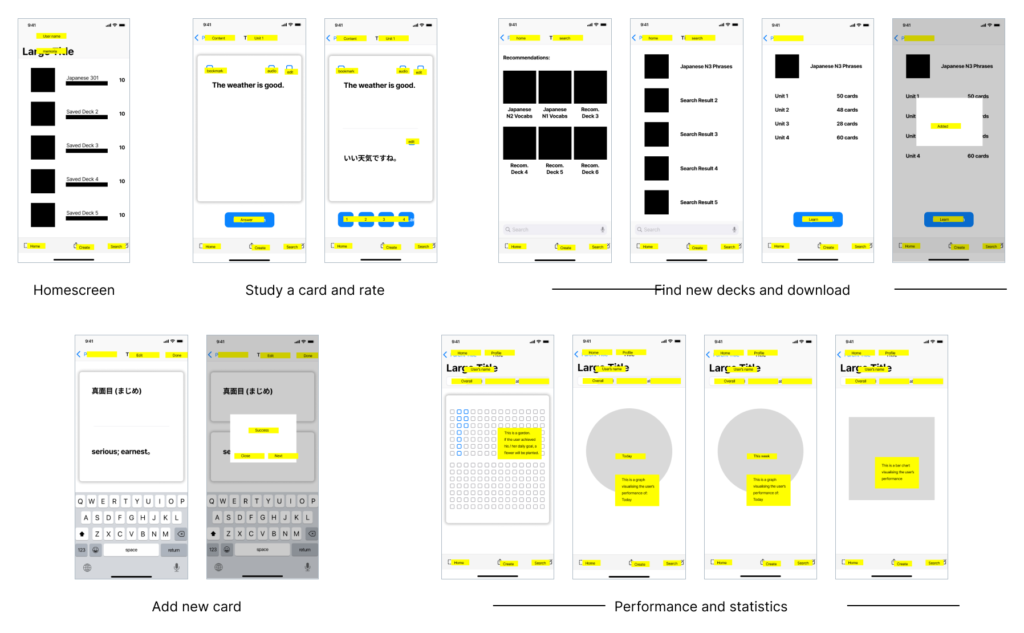
Android
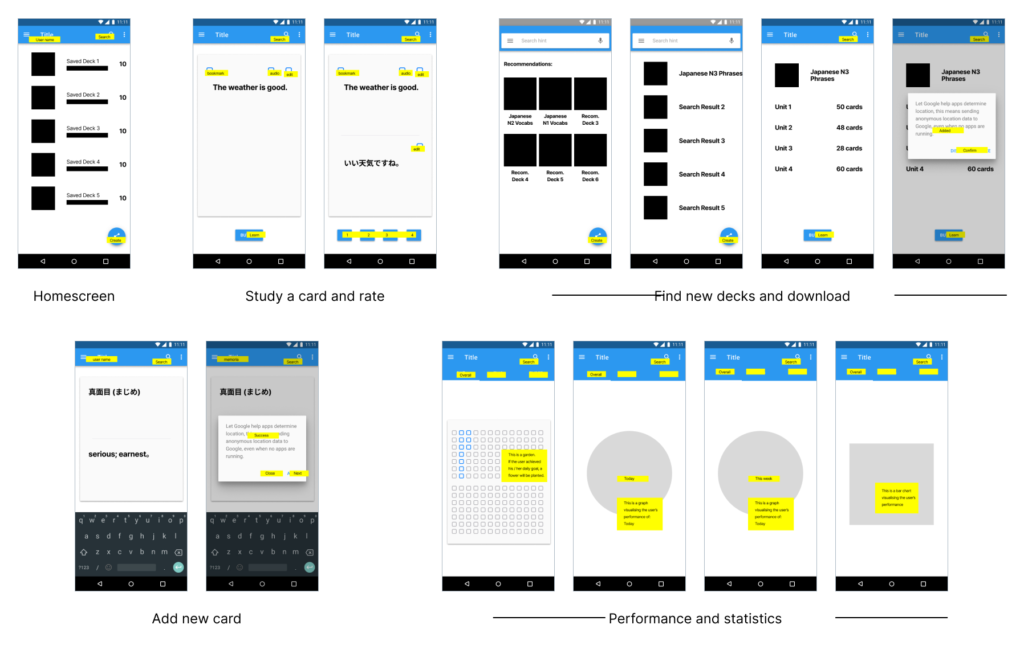
Final UI (iOS)

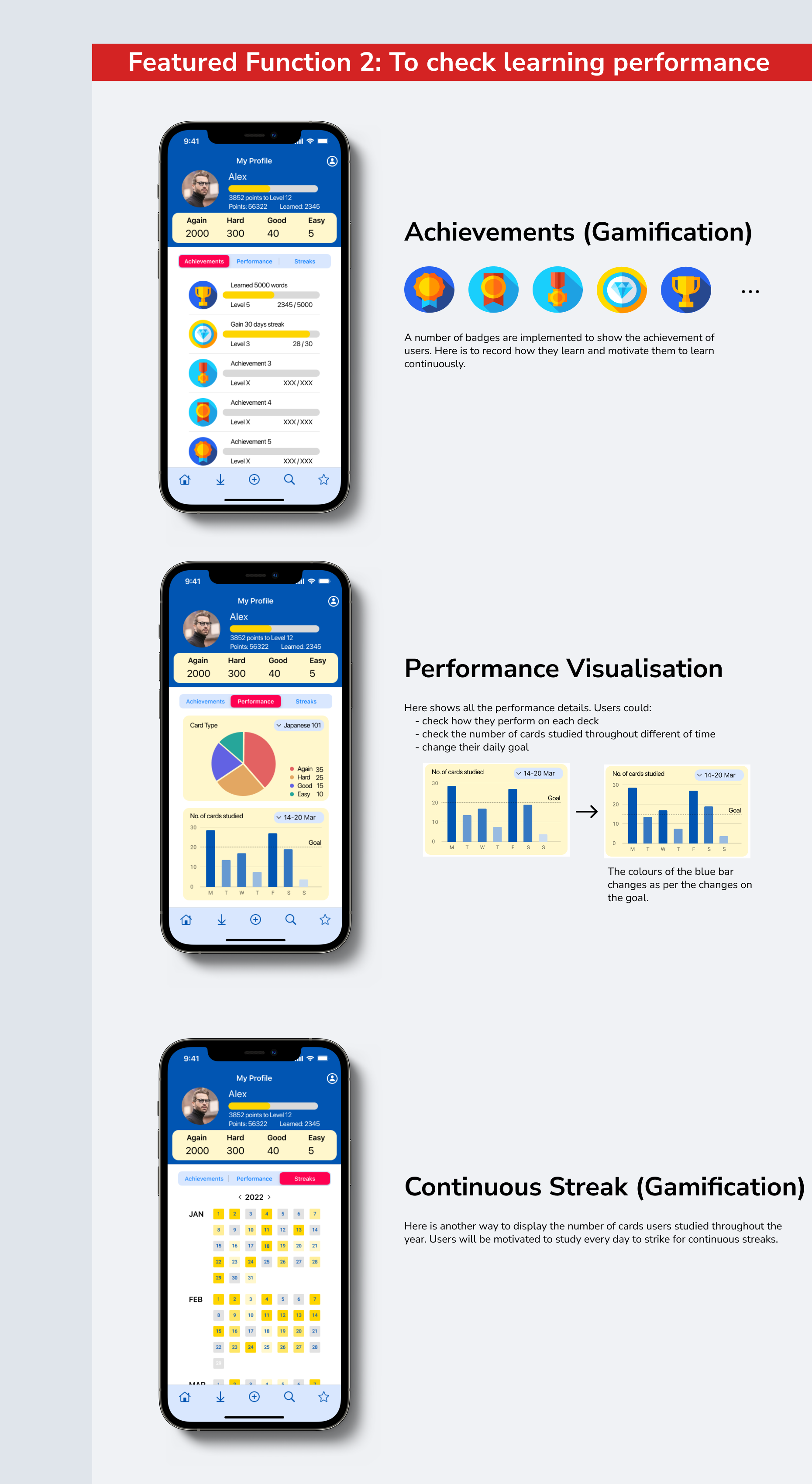
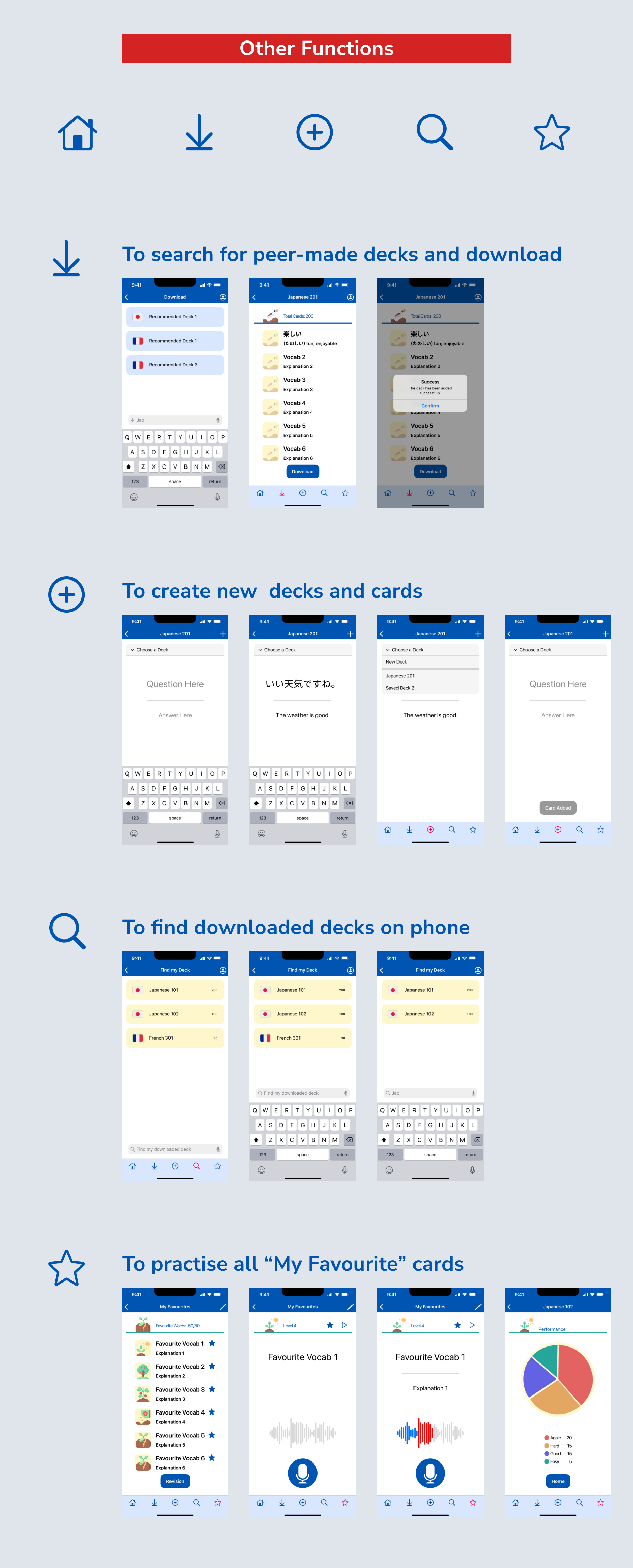
High-fidelity Wireframes (Android)

REFLECTIONS
This is t
